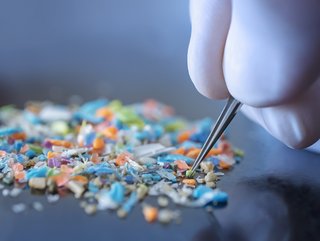New machine learning technology to detect microplastics

It’s a topic we hear about regularly. A one that many of us are becoming more conscious and aware of in our daily lives.
Microplastics. It seems that nowhere is free from these tiny, non-biodegradable fragments. From land, they are carried by rivers and wind to the ocean, where they break down into even smaller particles, called nanoplastics, which pose a threat to marine life and organisms that ingest them.
Currently, not a lot is known about microplastics (MPs) and their impacts, as it remains an emerging field of study. However, research has shown that scientists are detecting microplastics in human tissue and organs, as well as drinking water, food, and consumer products. Although the implications for human health are uncertain, it goes without saying that the ingestion of microplastics in the long run can’t be good for us.
Detecting microplastics early through the development of new technologies, could pave the way for reducing pollution-related deaths, as they are known to cause human and genetic toxicity through environmental pollution and their presence in the food chain.
Detecting microplastics in record time
A research team led by Dr. Ho Sang Jung of the Department of Nano-Bio Convergence at the Korea Institute of Materials Science (KIMS), a government-funded research institute under the Ministry of Science and ICT, in collaboration with the KOTITI Testing & Research Institute, has developed the world’s first ML technology to quickly and highly sensitively detect microplastics in the field.
The technology to find these microplastics is a kit-type, which when filtered through a syringe filter-type detection kit, the type, number, and distribution of MPs can identify the microplastics within 20 minutes, without any pre-treatment.
The team created a plasmonic material in the form of a nano pocket, designed to capture and identify microplastics present on the surface of a paper filter featuring microscale pores. This material amplifies the optical signal emitted by the captured pollutants.
Upon injecting a solution containing microplastic samples through a syringe, the Raman spectral signal is amplified on the nano pocket material, facilitating extremely sensitive detection. Moreover, this technology can also be used to identify microplastics at the nanometer scale.
In addition, the research team pre-trained an AI system on the Raman spectroscopy signals of microplastics. This allows the AI to differentiate whether the signal corresponds to the presence of microplastics, even when there are interfering elements present in the sample.
This technological advancement enables precise identification of microplastics, even within intricate settings or human samples, along with the ability to determine their concentration, distribution, and specific type.
Why is machine learning technology so important in this field?
The growing concern regarding environmental pollution and its implications for human health due to microplastics is on the rise, however there hasn't been a reliable method for detecting these minuscule plastic particles.
Since this technology could potentially pave the way for future regulations surrounding plastic products, which of course is heavily linked to climate change, it becomes imperative to develop technology for establishing an internationally recognised standard for detecting microplastics.
Another major advantage of this technology is that it can be easily used by the general public, since the sensor is made as a kit.
Senior researcher at KIMS, Dr. Ho Sang Jung, comments: “If this technology is commercialised, the technology for detecting microplastics universally will be more easily and rapidly disseminated.
“Based on this, KIMS will continue to spare no effort in developing material technologies for the safety of the people and future generations.”
******
For more insights into the world of AI - check out the latest edition of AI Magazine and be sure to follow us on LinkedIn & Twitter.
Other magazines that may be of interest - Technology Magazine | Cyber Magazine.
Please also check out our upcoming event - Cloud and 5G LIVE on October 11 and 12 2023.
******
BizClik is a global provider of B2B digital media platforms that cover Executive Communities for CEOs, CFOs, CMOs, Sustainability leaders, Procurement & Supply Chain leaders, Technology & AI leaders, Cyber leaders, FinTech & InsurTech leaders as well as covering industries such as Manufacturing, Mining, Energy, EV, Construction, Healthcare and Food.
BizClik – based in London, Dubai, and New York – offers services such as content creation, advertising & sponsorship solutions, webinars & events.






